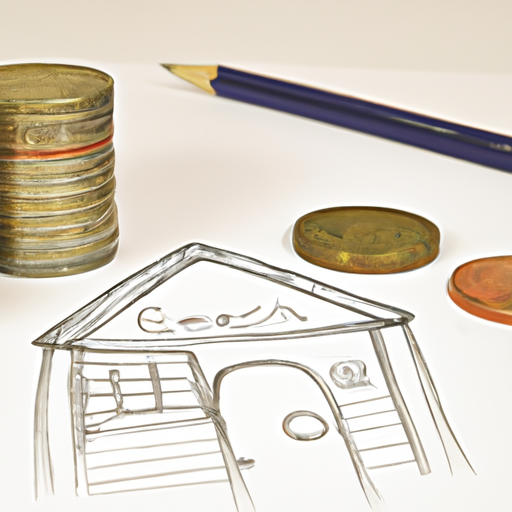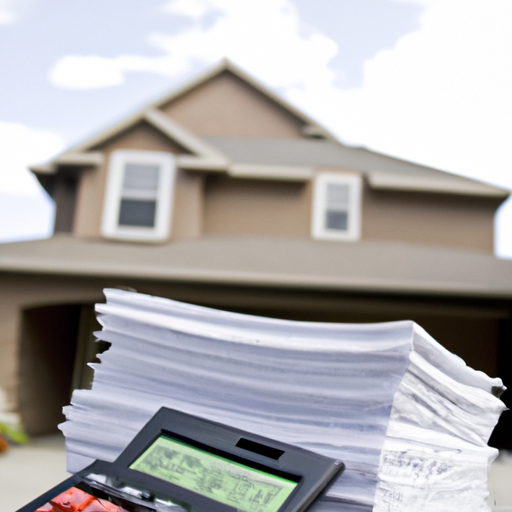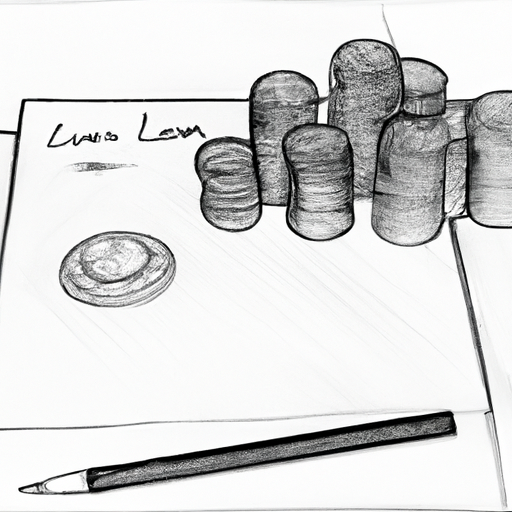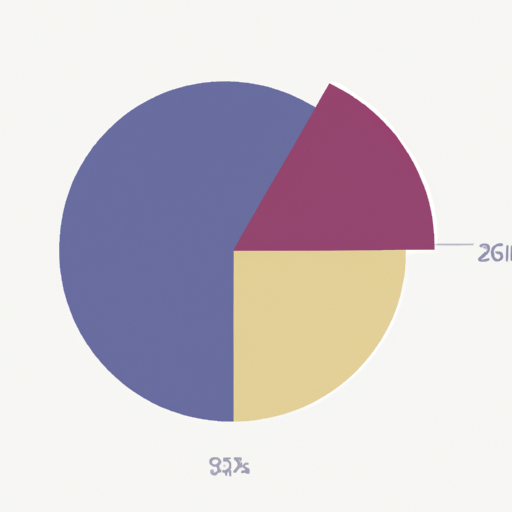Advantages of Refinancing Your Mortgage
When it comes to mortgages, most people are aware of the basics; you borrow money from a lender to purchase a home and make regular payments. However, what many aren’t aware of is the fact that you can refinance your mortgage to reduce your payments, shorten the term of your loan, or even access equity in your home. Refinancing your mortgage can be a great way to save money and optimize your long-term financial situation.
The most obvious advantage of refinancing your mortgage is the ability to reduce your monthly payments. When you refinance, you can take out a new loan at a lower interest rate than the one you currently have. This new loan will have a lower monthly payment than the one you currently have, resulting in a more manageable debt load. Additionally, you can opt for a loan with a longer term, which will reduce your monthly payment even further.
Another advantage of refinancing your mortgage is the ability to shorten the term of your loan. With a shorter loan term, you’ll pay off your mortgage much faster. This means more of your monthly payment will go towards paying down the principal balance of the loan, rather than just interest. This will save you money in the long run, as you’ll pay less interest over the life of the loan.
A third advantage of refinancing your mortgage is the ability to access the equity in your home. If you’ve built up enough equity in your home, you can use it as collateral to take out a loan. This loan can be used to cover a variety of expenses, such as home repairs, educational expenses, or even debt consolidation. This can be a great way to access the money you’ve earned in your home without having to take out a high-interest loan from a lender.
Refinancing your mortgage can be a great way to save money and improve your financial situation in the long run. Not only can you reduce your monthly payments, you can also shorten the term of your loan and access the equity in your home. With the right refinancing strategy, you can make your mortgage payments more manageable and ensure that you’re getting the most out of your home.

Disadvantages of Refinancing Your Mortgage
When considering refinancing your mortgage, it’s important to weigh all of the potential pros and cons to make sure that the choice you make is the best one for your financial situation. One of the potential drawbacks to refinancing your mortgage is that you may end up paying higher interest rates than you were initially. A mortgage refinance means taking out a new loan, and it usually comes with a higher interest rate than a traditional mortgage loan. That’s because you’re essentially starting fresh, and lenders want to protect themselves against the potential risk of borrowers defaulting.
Another disadvantage of refinancing your mortgage is that you may end up paying more in fees. Fees associated with refinancing your mortgage include origination fees, application fees, appraisal fees, title search fees, and closing costs. All of these fees can add up quickly and can end up costing you substantially more than you initially planned.
A third potential disadvantage of refinancing your mortgage is that you may end up with a longer loan term. Longer loan terms usually mean higher interest rates over the life of the loan, so if you’re taking out a longer loan term, be mindful of the potential higher costs that could be associated with it.
Refinancing your mortgage can also mean that you have to pay for private mortgage insurance (PMI). PMI is required on certain types of loans, such as those with high loan-to-value ratios, and it can add up quickly.
Finally, refinancing your mortgage can lead to tax implications. If you refinance your mortgage, you may end up owing taxes on any amount of the loan that is used to pay off the existing mortgage. This is known as the “Mortgage Debt Relief Act.” It is essential to talk to a tax professional before refinancing your mortgage to make sure that you understand any potential tax implications.
Refinancing your mortgage can be a great way to save money, but it’s important to understand all of the potential drawbacks before making a decision. Make sure to do your research and consult with a trusted professional before you commit to a mortgage refinance. With careful consideration and the right information, you can make an informed decision that is the best choice for your financial situation.

Understanding the Basics of Refinancing
It’s important to understand the basics of refinancing before you make a decision about whether or not to refinance your mortgage. Refinancing is the process of taking out a new loan to replace an existing loan, usually with the intention of consolidating debt, reducing the interest rate and monthly payment, or taking out cash for home improvements or other expenses. Before you refinance, it is essential to weigh the pros and cons carefully and make sure that it is the right decision for you and your family.
Refinancing your mortgage could be beneficial in a number of ways. For example, you might be able to reduce your monthly payment, get a lower interest rate, or pay off your loan faster. You could also use the equity in your home to take out a loan to pay for home improvements, college tuition, or other large expenses. Refinancing could also help you pay off other debt, such as credit card debt, and free up money for other uses.
However, there are also some potential downsides to refinancing your mortgage. For example, you may have to pay additional closing costs, such as an application fee, appraisal fee, or points. Additionally, you may have to extend the length of your loan, resulting in more interest payments over time. It is also possible that you may not be able to get the same interest rate or loan terms as your current loan, which could end up costing you more money in the long run.
Before you make a decision to refinance your mortgage, it is essential to do your research and make sure that it is the right decision for you and your family. It is important to compare different lenders and their loan terms, as well as the costs associated with refinancing. You should also consider how long you plan to stay in your home and how much equity you have in it. Additionally, you should speak with a financial advisor who can help you understand the terms of the loan and the potential long-term benefits or consequences of refinancing.
Refinancing your mortgage can be a great way to save money, reduce your monthly payment, or pay off other debt. However, it is important to do your research and understand the pros and cons of refinancing before you make a decision. Take the time to compare lenders and loan terms, calculate the costs associated with the loan, and speak with a financial advisor to ensure that you are making the best decision for your family. With the right preparation and understanding of the process, refinancing your mortgage can be a great way to achieve your financial goals.

What Documents Are Needed to Refinance a Mortgage?
When it comes to refinancing your mortgage, there are a number of important documents you will need to have in order for the process to go as smoothly as possible. Understanding what documents you need can help you plan ahead, making the process much easier.
When preparing for a refinance, the first and most important document you need is a current proof of income. This could be in the form of a pay stub, W2, or tax return. This document will provide the lender with a snapshot of your income and help them determine the maximum loan amount and interest rate you qualify for.
The next document you will need is a copy of your credit report. Your credit score and history will play a large role in determining the terms of your loan and the interest rate you will receive. It’s important to review your credit report ahead of time to make sure it is accurate and up to date.
You will also need to provide the lender with proof of assets. This could include statements from any savings or investment accounts you have, as well as any other property or assets you own. This will give the lender an idea of your financial stability and help them determine the risk involved in providing you with a loan.
You should also provide the lender with a copy of your current mortgage statement. This will provide the lender with information about your existing loan and help them determine how much you owe and what terms you are currently working under.
Finally, you will need to provide the lender with information about any other debts you may have. This could include credit card statements, auto loans, student loans, or other debts. Providing this information will help the lender get a better understanding of your overall financial picture.
Knowing the documents you need to provide when refinancing your mortgage can help the process go much more smoothly. Having all of the required documents ready ahead of time can make the process much easier and help you get the best possible terms on your new loan.

Factors to Consider When Refinancing
When it comes to the process of refinancing your mortgage, there are several factors that need to be considered before you make a decision. It’s important to weigh the pros and cons before taking the plunge, as refinancing your mortgage can be a great financial decision, but it can also have some drawbacks.
First and foremost, it’s important to consider the amount of money you will be able to save by refinancing your mortgage. If you are able to lower your interest rate, you can potentially save thousands of dollars in the long run. That savings can be used for other important investments, such as college tuition for your children or retirement savings. Additionally, if you have an adjustable rate mortgage (ARM), you may be able to convert it to a fixed rate mortgage, which can provide more stability in your monthly payments.
On the other hand, there are also potential drawbacks to refinancing your mortgage. You will likely have to pay lender fees and closing costs in order to refinance your loan, which can put a dent in your savings. Additionally, if you’ve had your mortgage for a long time and have built up equity, you may end up resetting your equity when you refinance. This means that you may have to pay off the entire loan balance and start over, which can take away some of the benefit of refinancing.
Finally, it’s important to consider the length of your loan when refinancing. Many homeowners choose to refinance their loan in order to reduce their monthly payments, but this can mean extending the length of the loan. This could mean lower payments in the short term, but could also mean that you end up paying more interest in the long run.
When it comes to refinancing your mortgage, it’s important to take the time to consider all the factors before making a decision. It’s important to weigh the pros and cons and make sure that you’re making the best decision for your financial future. Doing so can help you to save money and enjoy the benefits of refinancing your mortgage.

How to Calculate the Cost of Refinancing
When considering whether to refinance your mortgage, it is important to know how to calculate the cost of refinancing. Refinancing your mortgage can be a great way to save money, but it is important to do the math to make sure it is worth it.
The first step in calculating the cost of refinancing is to determine the break-even point. This is the point at which the money saved on the refinance will equal the cost of the refinance. To do this, add up the total cost of the refinance, including all closing costs, points, and other fees. Then, divide the cost of the refinance by the monthly savings on the loan. This will give you the number of months it will take for you to break even.
The second step in calculating the cost of refinancing is to figure out your total loan costs. To do this, add up the principal amount of the loan, the interest rate, and any other fees associated with the loan. This will give you the total cost of the loan.
The third step in calculating the cost of refinancing is to compare the total loan costs to the cost of the refinance. Subtract the cost of the refinancing from the total loan costs to get the net cost of the refinance. This will give you the total cost of the refinance, minus any closing costs or other fees associated with the loan.
The fourth step in calculating the cost of refinancing is to compare the net cost of the refinance to the savings you will receive on the loan. Subtract the savings from the net cost of the refinance to determine your total savings. This will give you the total amount of money you will save by refinancing the loan.
Finally, consider the time it will take for you to break even and the total savings you will receive. If the total savings are significantly more than the cost of the refinance and the break-even point is within a reasonable amount of time, then refinancing your mortgage can be a great option.
Refinancing your mortgage can be a great way to save money, but it is important to do the math and make sure it is worth it. By understanding how to calculate the cost of refinancing, you can make an informed decision and determine if refinancing is the right choice for you.

Potential Tax Implications of Refinancing
When considering the potential pros and cons of refinancing your mortgage, one of the most important factors to consider is the potential tax implications of refinancing. It is important to understand that, although refinancing may save you money in the short term, it may also result in higher taxes in the long run.
The primary tax implication of refinancing your mortgage is that you may be subject to capital gains taxes when you refinance. This means that if the amount you refinance is higher than the amount of your original loan, the difference is considered a capital gain, and you will be required to report it on your taxes. Additionally, if you are subject to capital gains taxes, you may also be required to pay additional taxes on any interest or points paid at the time of refinancing.
It is also important to note that if you refinance your mortgage, you may be eligible for certain tax deductions. For example, if you refinance your primary residence, you may be able to deduct the points paid on the refinancing transaction as an itemized deduction on your taxes. Additionally, you may also be able to deduct certain fees associated with the refinancing process, such as appraisal fees.
Finally, it is important to keep in mind that while refinancing your mortgage may be beneficial in the short-term, it can also have a significant impact on your long-term tax liabilities. Before deciding to refinance, it is important to consult with a qualified tax professional to ensure that your decision is in your best interests.
Refinancing your mortgage can be a great way to save money in the short-term, but it is important to remember that it can also have a significant impact on your taxes. It is important to understand the potential tax implications of refinancing, and to consult with a qualified tax professional to ensure that your decision is in your best interests. By understanding the potential pros and cons of refinancing your mortgage, you can make an informed decision and ensure that you are taking advantage of all the benefits available to you.

Improving Your Credit Score Before Refinancing
Refinancing your mortgage is a great way to save money and improve your financial situation. But before you can refinance, you need to consider your credit score. Improving your credit score is one of the most important steps you can take before refinancing your mortgage.
Having a good credit score is essential for getting approved for refinancing. Your credit score is a reflection of how reliable you’ve been in the past with meeting your financial obligations. A higher credit score means that lenders view you as a more responsible borrower and are more likely to extend you a loan.
The first step to improving your credit score before refinancing is to check your credit report to ensure that all of the information is accurate. Sometimes errors can occur and it’s important to make sure that everything is up-to-date and correct.
After you’ve checked your credit report, you can start to work on improving your credit score. This can involve paying off any debts that you have, eliminating any collections that you may have, and making sure that you are making all of your payments on time.
Another way to improve your credit score is to reduce the amount of debt that you have. This means that you should try to pay off your credit cards and other loans as quickly as possible. This will show lenders that you are taking responsibility for your debts and are serious about improving your credit score.
Finally, you can also try to increase your credit limit. This will show lenders that you are trustworthy and can handle larger amounts of debt. This can also help to improve your credit score by increasing your available credit.
Improving your credit score before refinancing your mortgage is an essential step in the process. It’s important to make sure that your credit report is accurate and to work on paying off your debts and increasing your credit limit. By taking these steps, you can increase your chances of getting approved for a lower interest rate and save money on your mortgage.

Understanding the Refinancing Process
Refinancing your mortgage can be a great way to save money and lower your monthly payments. It can also be a complicated process that requires careful consideration and a thorough understanding of the process.
The first step in the process is to understand why you would want to refinance and what type of loan is best for your situation. There are several common reasons for refinancing, such as consolidating debt, reducing your monthly payments, or getting cash back for home improvements. Depending on your individual circumstances, one type of loan may be more beneficial than another.
Once you’ve determined what type of loan to pursue, it’s time to compare lenders and rates. Shop around to find the best rate, but also consider other factors such as closing costs, fees, and customer service. It’s important to find a lender you can trust and feel comfortable working with.
After you’ve chosen a lender, you’ll need to provide them with information about your current loan, your credit score, and your income. Your lender will then assess your application and determine if you qualify for a refinance. They may also request additional information, such as an appraisal of your home.
Once the lender has approved your refinance, you’ll need to sign a new loan agreement. This document will include the terms and conditions of your new loan, so it’s important to read it carefully. Make sure you understand all aspects of the loan, such as the interest rate, monthly payments, and loan fees.
After you’ve signed the loan agreement, the lender will arrange for the loan to be funded. This typically takes several weeks, so it’s important to plan accordingly. Once the funds have been transferred, you’ll be ready to begin making your new monthly payments.
Understanding the refinancing process is key to taking advantage of the benefits of refinancing. Make sure to do your research, compare lenders, and thoroughly read the loan agreement before signing. With careful consideration, refinancing can be a great way to save money and lower your monthly payments.


